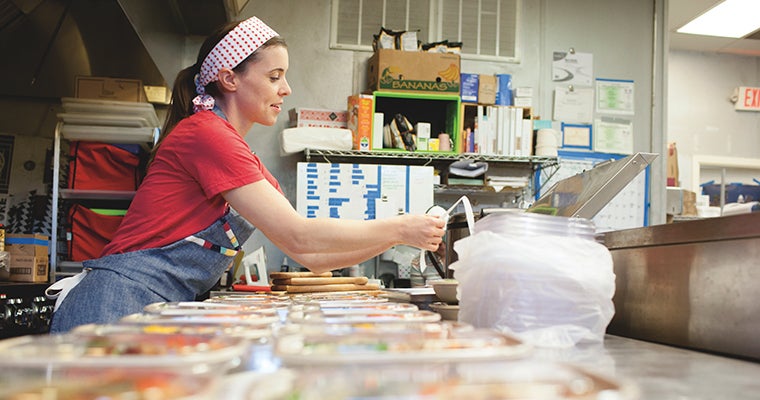This new, lower-cost model might be the answer to affordably starting a foodservice business.
The cost of opening a new restaurant can be frightful. A new business model called “ghost kitchens” minimizes start-up costs and brings food straight to the customer. Here’s what you need to know.
A ghost kitchen is a foodservice operation configured for delivery only. There is no front of the house, only a back. Customers order digitally, typically through a third-party delivery service, and food is transported to them.
It’s too early to declare ghost kitchens a bona fide trend, but industry players sense an opportunity. In late 2018, the parent company of Google teamed with venture capitalists to invest $10 million in a startup planning ghost kitchens from coast to coast.
Here are some factors fueling ghost kitchens:
- Low cost. Eliminating the front-of the-house—no seating, servers, bartenders, printed menus or occupancy permits—cuts expenses. Insurance premiums and compliance costs are lower. Startup costs are less because it’s not vital to secure a prime retail location.
- Chef independence. Because restaurant costs are so high, chefs often team with partners. With lower startup costs, chefs may be able to go solo with a ghost kitchen and keep far more operational control.
- Digital delivery. Ghost kitchens typically partner with a third-party delivery service like GrubHub, Uber Eats and DoorDash, minimizing startup costs.
Culinary considerations
Ghost kitchens offer unique opportunities and challenges, says Gordon Food Service Associate Consulting Chef Nick Gonring.
“There’s less risk of experimenting. You can try out new ideas and if something doesn’t work, it’s easy to abandon it,” Gonring explains. “However, there’s less room for error. Repeat orders depend entirely on the quality and consistency of ingredients, preparation and delivery.”
Expert Help
Ask your Sales Representative about our specialists who can help you work through the operational and menu implications of a ghost kitchen.










